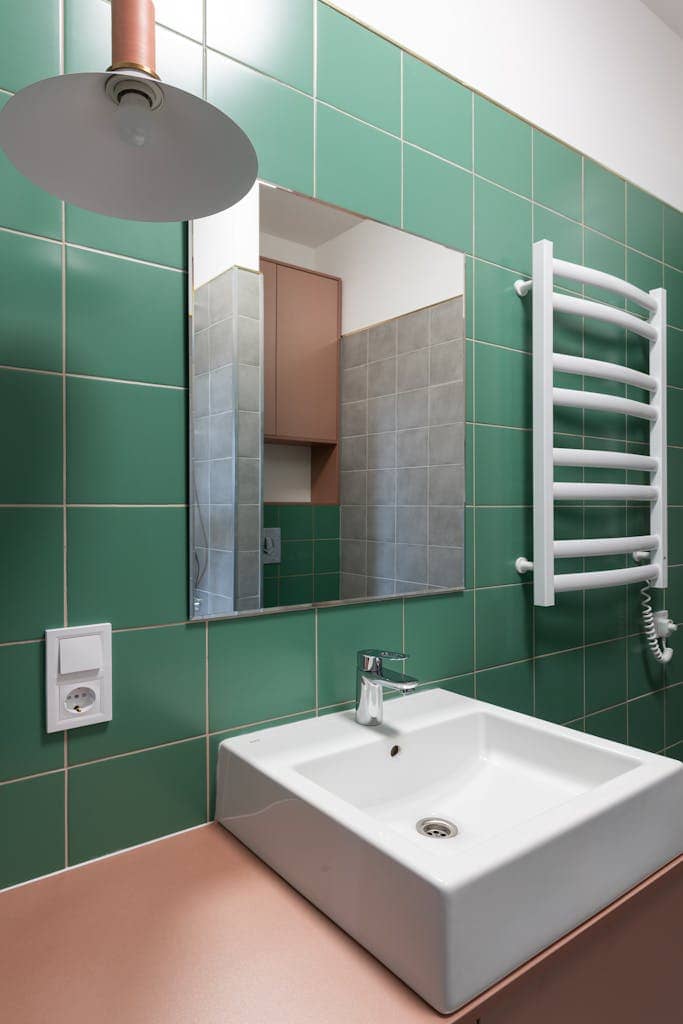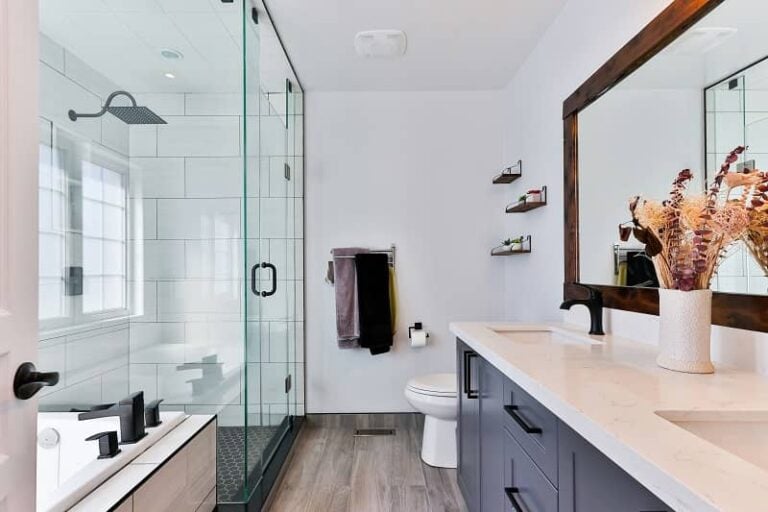How to Get Rid of Black Mold in Your Home
How to Get Rid of Black Mold in Your Home
Skill Level: Intermediate
Estimated Cost: $5 – $25
Note: Cleaning mold can be dangerous. If you are hesitant to tackle the job yourself, be sure to use proper safety practices and contact a professional.

Black mold (Stachybotrys chartarum) is a fungus that can pose health risks to humans and pets. It is often found in damp, warm, and humid environments, making homes an ideal mold breeding ground. Getting rid of black mold involves a careful and thorough process to ensure your safety and prevent its recurrence. This article covers essential aspects, including the best cleaners, necessary equipment, safety considerations, a step-by-step guide for mold removal, prevention tips, and an FAQ section.
Best Types of Cleaners to Use
When tackling black mold, choosing the correct cleaner is crucial. Here are the recommended options:
- Bleach: Effective for hard, non-porous surfaces. It kills mold spores but can discolor surfaces and produce harsh fumes (1).
- Hydrogen Peroxide: A safer alternative to bleach. It’s effective on various surfaces, including fabrics, and doesn’t leave toxic residue (2).
- Vinegar: A natural option that can kill up to 82% of mold species. It’s safe for most surfaces and doesn’t emit harmful fumes (3).
- Commercial Mold Removers: Specially formulated products effective on porous and non-porous surfaces. Always follow the manufacturer’s instructions (4).
Safety Considerations
Exposure to black mold can lead to various health issues, from allergic reactions such as sneezing, coughing, and skin irritation to more severe conditions, including respiratory infections and worsening of asthma symptoms. Individuals with compromised immune systems, the elderly, and children are particularly vulnerable to the effects of black mold exposure.
The mycotoxins produced by black mold have been linked to neurological problems and, in extreme cases, can lead to death. The Centers for Disease Control and Prevention (CDC) highlights the importance of promptly addressing mold issues within indoor environments to mitigate these health risks and recommends professional removal of extensive mold infestations to ensure safety and effectiveness (5).
When using chemical cleaners like bleach, ensure the area is well-ventilated. Consider using fans or opening windows to circulate air and reduce fume inhalation.
To prevent mold spores from spreading, seal the affected area with plastic sheeting and wear an N-95 respirator to avoid inhaling spores.
Step-by-Step Guide for Getting Rid of Black Mold
To effectively remove black mold from your home, you must follow a detailed, step-by-step approach to remove the mold and protect your health and home from potential mold-related issues. Here’s a more thorough guide to help you tackle black mold safely and effectively.

Equipment and Tools Necessary
Safety Gear: N-95 respirator, gloves, goggles
Cleaning Tools: Scrub brush, sponge, bucket
Protective Plastic Sheeting: To seal off the affected area
High-Efficiency Particulate Air (HEPA) Vacuum: For cleaning up after mold removal
1. Prepare the Area
- Isolate the Contaminated Area: Use heavy-duty plastic sheeting to seal off the space where mold is present, covering doorways, vents, and other openings to prevent mold spores from spreading to different areas of your home. Secure the sheeting with tape.
- Wear Protective Gear: Before starting the removal process, equip yourself with an N-95 respirator mask, gloves, and goggles. These will protect you from inhaling mold spores and coming into direct contact with mold and cleaning chemicals.
2. Select and Apply a Cleaner
- Choosing a Cleaner: For non-porous surfaces (like tiles or glass), a commercial mold remover or a solution of bleach and water (1 cup of bleach to 1 gallon of water) can be effective. For porous surfaces (like wood or drywall), consider using vinegar, hydrogen peroxide, or a commercial product specifically designed for that surface.
- Application: Spray the chosen cleaner generously on the moldy area, ensuring it’s completely covered. For homemade solutions, use a spray bottle for easy application. Allow the cleaner to sit for the recommended time per the manufacturer’s instructions or at least 10 minutes for homemade mixtures.
3. Scrub the Mold
- Scrubbing Process: Vigorously scrub the affected area with a stiff-bristle brush to remove the mold. For stubborn mold infestations, applying the cleaning solution multiple times may be necessary, allowing it to penetrate deeply with each application.
- Attention to Detail: Ensure you reach into crevices and corners where mold can easily be overlooked. Use a brush with stiffer bristles to get into the nooks and crannies for textured surfaces.
4. Wipe Clean
- Removing Residue: Use a damp cloth to remove the loosened mold and any excess cleaner after scrubbing. A mop that’s frequently rinsed can be more efficient for larger areas.
- Repeat if Necessary: In some cases, you might need to repeat the cleaning process to ensure all mold has been removed, especially in areas with deep infestations.
5. Dry Thoroughly
- Ensuring Dryness: Use fans and dehumidifiers to dry the cleaned area completely. The area must be left dry to prevent mold from regrowing due to moisture.
6. HEPA Vacuum
- Final Cleaning: After the area has dried, use a HEPA vacuum over the cleaned surfaces and the surrounding area to capture any lingering mold spores. This type of vacuum is designed to trap small particles, such as mold spores, preventing them from being released into the air.
- Disposal: To prevent mold spores from reintroducing into your home, dispose of the vacuum bag or empty the vacuum canister outside, away from your living spaces.
Post-Cleanup
After completing these steps, keep the area ventilated for several days to help remove any residual spores and odors. Regularly check the cleaned areas for signs of mold returning, especially after damp conditions, and address any moisture problems immediately to prevent new mold growth.
How to Prevent Black Mold
Preventing black mold in your home involves several key strategies, including controlling moisture levels, ensuring adequate ventilation, and maintaining clean surfaces. Since mold thrives in moist environments, managing humidity inside your home is crucial.
The Environmental Protection Agency (EPA) recommends keeping indoor humidity levels below 60 percent, preferably between 30 and 50 percent, to hinder mold growth (5). This can be achieved using dehumidifiers and air conditioners, especially in hot, humid climates. Proper ventilation in moisture-prone areas, such as bathrooms, kitchens, and laundry rooms, is also essential. Installing exhaust fans that vent outside your home can help remove excess moisture from these areas (6).
Regularly inspecting your home for leaks and fixing them promptly prevents mold growth. Pay special attention to roofs, windows, and pipes, as these areas are common sources of moisture (7). The EPA recommends cleaning and drying wet or damp spots within 48 hours to prevent mold proliferation (8).
Moreover, maintaining clean and dust-free surfaces can significantly reduce mold growth. Dust can absorb moisture and provide a food source for mold, so regular cleaning and dusting are essential prevention steps (9). Using mold-inhibiting products on susceptible areas and materials can further protect your home. For example, applying water-resistant paints and primers on walls and incorporating mold-resistant building materials during repairs or renovations can provide long-term prevention (10).
Finally, ensuring your home has good airflow can also prevent mold growth. Open windows and doors when weather permits to increase circulation and reduce moisture levels inside your home. Utilizing fans and moving furniture away from walls to improve air circulation in less-ventilated spaces can also be beneficial (11).
Q: Is it safe to clean black mold myself?
A: Yes, for small infestations, with proper safety gear. For large areas, consider hiring professionals.
Q: Can black mold come back after cleaning?
A: Yes, if the underlying moisture problem isn’t resolved.
Q: Are natural cleaners as effective as chemical ones?
A: They can be for small areas and less severe infestations. However, more potent chemicals or professional removal might be necessary for more significant issues.

Sources
- Agency for Toxic Substances and Disease Registry (ATSDR). (n.d.). Toxicological profile for bleach.
- American Chemical Society (ACS). (n.d.). Properties of hydrogen peroxide.
- Vinegar Institute. (n.d.). The use of vinegar in mold removal.
- Environmental Protection Agency (EPA). (2020). A brief guide to mold, moisture, and your home.
- Centers for Disease Control and Prevention. (2021). Basic Facts about Mold and Dampness. https://www.cdc.gov/mold/dampness_facts.htm
- U.S. Environmental Protection Agency. (2022). A Brief Guide to Mold, Moisture, and Your Home. https://www.epa.gov/mold/brief-guide-mold-moisture-and-your-home
- Centers for Disease Control and Prevention. (2021). Basic Facts about Mold and Dampness. https://www.cdc.gov/mold/dampness_facts.htm
- American Industrial Hygiene Association. (2020). Recognizing and Preventing Mold Growth. https://www.aiha.org/public-resources/consumer-resources/prevent-mold-growth
- U.S. Environmental Protection Agency. (2022). Mold Cleanup in Your Home. https://www.epa.gov/mold/mold-cleanup-your-home
- Institute of Medicine (US) Committee on Damp Indoor Spaces and Health. (2004). Damp Indoor Spaces and Health. Washington (DC): National Academies Press (US).
- Minnesota Department of Health. (2019). Mold in Homes. https://www.health.state.mn.us/communities/environment/air/toxins/mold/index.html
- New York State Department of Health. (2018). Mold Prevention Strategies and Possible Health Effects in the Aftermath of Hurricanes and Major Floods. https://www.health.ny.gov/publications/7287/






